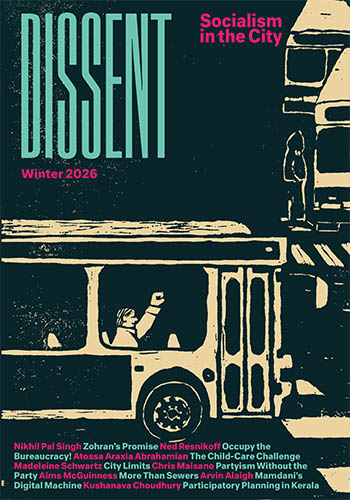Improving the Climate for Climate Legislation
Improving the Climate for Climate Legislation
G. Sterzinger: A New Climate Idea
In 1990, after nearly a decade of negotiating, the first Bush Administration amended the Clean Air Act to cap sulfur dioxide and nitrous oxide emissions to control acid rain and ozone pollution. Critically, the 1990 Clean Air Act Amendments allocated or “gave away” the allowances permitted under the law. Sulfur dioxide emissions, for instance, had to be cut from 15 million to 10.8 million tons per year, but the 10.8 million–ton allowance was allocated to those that had to reduce emissions. While no one knows all the reasons for the ultimate decisions about the allocation of emission permits, managing the regional financial impact of the bill was part of the calculus. And the 1990 cap worked.
When Obama came to office, his administration and its allies in Congress wanted to tackle climate change by putting a cap on CO2 emissions, but they wanted emitters to buy permits through an auction, putting a price on all energy used based on its carbon content. Everyone from Robert Reich to ardent environmentalists thought the auction was a wonderful innovation. In 2007 Reich wrote,
The best idea I’ve heard so far to deal with global warming is not a carbon tax. I can’t imagine any politician calling for higher taxes affecting the middle class, or for that matter the middle class—already squeezed by high energy prices and stagnant wages—putting up with it…The best idea I’ve heard is described as a carbon auction. Companies would have to bid for the right to pollute.
But the price paid at auction would in turn increase the price of oil, gasoline, natural gas, and electricity for consumers. An auction, despite Reich’s analysis, is indistinguishable from a carbon tax.
The administration tried to build support for the auction with an ultimately unconvincing set of arguments based on morality, austerity, and catastrophe. We are addicted to fossil fuels and must pay more for energy to break the habit, and must make the polluters pay for the damage they’ve done. We must tax energy to reduce the deficit (even the most conservative estimates placed annual revenues from the carbon auction in the hundreds of billions of dollars). And unless we follow these policies, tornadoes, flooding, and even greater disasters will follow.
Climate change is real, but it can’t be used to drum up support for bad policies. Once the impact of the proposed energy price increases started to trickle into public awareness, there was a backlash against the policies and even against tackling climate change at all. To see how unfair a carbon auction would be, compare what would happen to the cost of electricity in Ohio, where much of the electricity is generated using coal, and Washington state, which gets 50 percent of its electricity from large federal hydroelectric dams. At the $30 per ton auction price, electric rates in Ohio would have to be raised by more than $3 billion per year, or about 30 percent—around five times the increase in cost in Washington. Beyond the regional imbalances in energy costs, a carbon auction would have significant effects on international competitiveness, placing at an immediate disadvantage industries currently operating in the coal belt and possibly leading to massive job losses.
The carbon auction effort failed—badly. Two years in there has been a sea change in expectations and public support. Climate change rarely gets mentioned now in “polite society,” even though a brand new poll “shows that a large majority of Americans believe that this year’s unusually warm winter, last year’s blistering summer and some other weather disasters were probably made worse by global warming.” Addressing the problem, and figuring out what went wrong last time, remains critical.
THE OBAMA administration’s biggest mistake lay in linking CO2 regulation and reduction with major increases in energy prices. Energy is a basic necessity for most people, and taxes on it are generally very regressive. To have any chance of success, climate policy must be unhooked from putting a “price on carbon.”
Henry Waxman and Ed Markey, two of the major architects of the failed initial efforts, recently suggested that their current thinking on the problem hasn’t changed much in the ensuing years: “The best approach would be to use a market mechanism such as the sale of carbon allowances or a fee on carbon pollution to lower emissions and increase revenue.” John Podesta, founder and chairman of the Center for American Progress, recently went even further at a Fortune magazine conference on the future of climate policies. “In the spring of 2013, all these ideas are going to be on the table,” said Podesta. “When you get to closing that [revenue] gap…a carbon tax could become an attractive alternative to everything else.” Panel moderator Nina Easton asked whether that could damage Obama, particularly in swing states like Ohio where the effects would be most drastic. Podesta rejected the idea that a majority of people even in those states will see the EPA actions negatively. “Most of those states have seen a strong manufacturing response to these clean technologies,” Podesta said. “It’s actually a rather easy sell there. [Obama] ought to be full-throated about supporting what the administrator of the EPA is doing.” That’s obviously wrong. So why do prominent Democrats continue to push expensive, regressive, counterproductive, and unnecessary climate policies?
Perhaps they can’t think of a different attack. Here’s something new.
The United States uses 3.5 trillion kWh of electricity and 200 billion gallons of transportation fuels each year, resulting in annual CO2 emissions of roughly 5.8 billion metric tons. The strong scientific consensus linking CO2 emissions to climate change makes setting a limit or cap on CO2 emissions critical. But a cap must be folded into an overall program to create an energy industry capable of providing fuel at a small fraction of present CO2 emissions—and without producing destructive price increases. This is a technological challenge but it is also a political one: to design an interlocking set of policies that will move and reshape one of the largest industries in the world without producing a crippling backlash. The key is to devise policies that reward CO2 avoidance rather than raise the price of all fossil energy.
A climate bill that follows the successful example of the Clean Air Act Amendments of 1990 would cap CO2 emissions, allocate allowances to meet the cap, require existing polluters to invest in technological solutions to reduce emissions to the capped level, and then allow trading to begin. A new natural gas plant in Nevada, for example, would have to purchase emissions from plants that have over-complied in, say, Ohio. The sale of excess emissions from Ohio to Nevada would provide a new source of revenue to finance the cost of CO2 reductions at existing Ohio generators. Old coal plants in the region offer perhaps the richest investment opportunity. These inefficient plants, large emitters of CO2, could be replaced with new clean coal or renewable plants and thus free up many CO2 allowances.
A cap is an absolutely necessary piece of energy policy to address climate change issues, but it is only a piece. The CO2-neutral technologies that will provide us with the energy we need while reducing emissions are still very much under development. Energy policy to meet the climate challenge must provide incentives for moving CO2-free technologies from the labs to the commercial market, and at an affordable cost. It must encourage rapid cycles of technology innovation. Ideally, it would create these new technologies in a way that opened new opportunities for domestic industry and job creation. And the broad public must see and understand how all of this fits together. What we don’t need is a regressive “price on carbon” that derails our climate program before it even gets started. Again.
George Sterzinger is the executive director of the Renewable Energy Policy Project.
Photo: wind farm in New York State, by Windtech, 2008, via Wikimedia Commons






